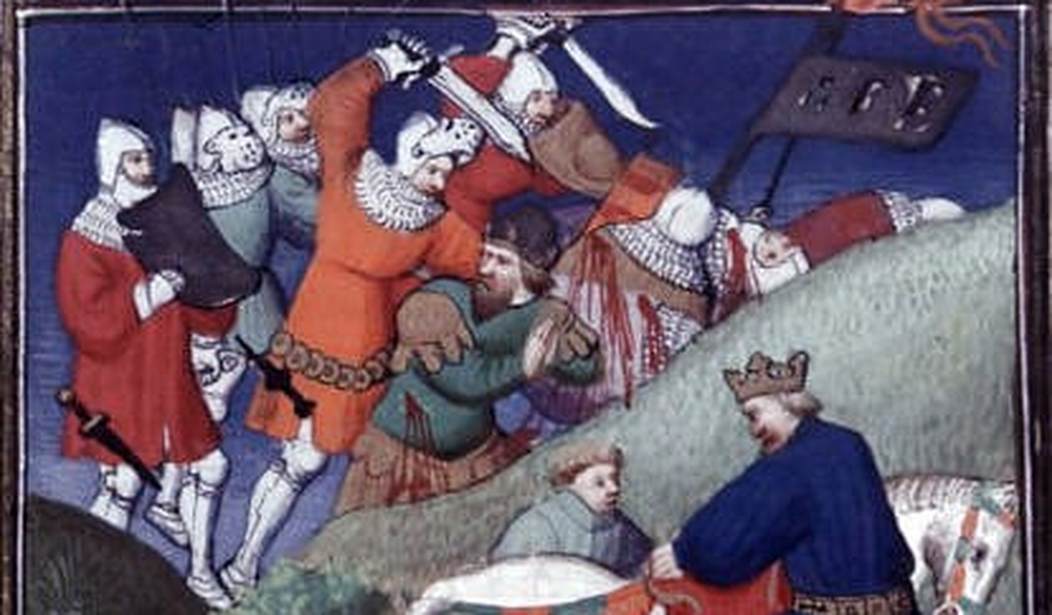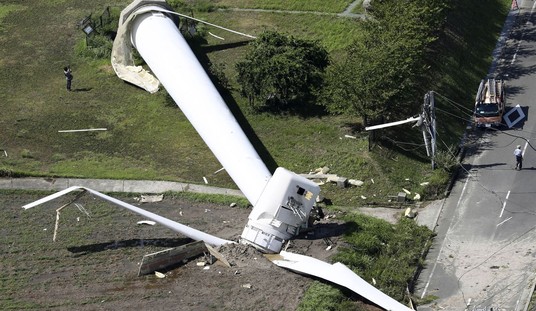Today in history, on August 26, 1071, one of the most decisive battles in all world history took place—that of Manzikert, which initiated the creation of the modern state of Turkey atop formerly Christian Asia Minor.
What happened on that day and the days leading to it is worth recounting.
In 1019, “the first appearance of the bloodthirsty beasts … the savage nation of infidels called Turks entered Armenia,” in eastern Anatolia, “and mercilessly slaughtered the Christian faithful with the sword,” writes a chronicler. In the ensuing years and decades, virtually the whole of Armenia was decimated: Hundreds of thousands were slaughtered or enslaved, and thousands of churches torched or desecrated, including by being turned into mosques:
Who is able to relate the happenings and ruinous events which befell the Armenians, for everything was covered with blood. . . . Because of the great number of corpses, the land stank, and all of Persia was filled with innumerable captives; thus this whole nation of beasts became drunk with blood. All human beings of Christian faith were in tears and in sorrowful affliction…
Nor was there much doubt concerning what fueled the Turks’ animus: “This nation of infidels,” a military leader explained, “comes against us because of our Christian faith and they are intent on destroying the ordinances of the worshippers of the cross and on exterminating the Christian faithful.” Therefore, “it is fitting and right for all the faithful to go forth with their swords and to die for the Christian faith.” Many were of the same mind; records tell of monks and priests, fathers, wives, and children, all shabbily armed but zealous to protect their way of life, coming out to face the invaders—only to be butchered or enslaved.
Nor were the Turkish hordes, under the authority of the ascendant Seljuk tribe, content with Armenia; they continued riding westward across the Anatolian plain, then part of the Eastern Roman Empire (“Byzantium”), leaving a trail of smoke and destruction in their wake. On becoming emperor in 1068, Romanus Diogenes made it his priority to act. By 1069 he had amassed and marched a massive army deep into Asia Minor, liberating numerous cities from the Turks.
The two forces eventually met near the city of Manzikert, just north of Lake Van. The Turkic sultan, Muhammad bin Dawud—better known to posterity as “Alp Arslan,” or, “Heroic Lion”—sent a delegation to parley with Romanus on “the pretext of peace” though in reality “stalling for time,” explained Michael Attaleiates, who was present. This only “roused the emperor to war.”
Romanus spurned the emissaries, forced them to prostrate themselves before him, and commanded them to tell their sultan that “there will be no treaty . . . and no going home except after I have done in the lands of Islam the like of what has been done in the lands of Rome [Byzantium].” Then, having “dismissed the ambassador with the greatest contempt,” Romanus incited his men to war with “words of extraordinary violence.”
Muhammad exhorted his men to jihad and reminded them of its win-win scenario: “If we are given victory over them, [well and good]. If not, we will go as martyrs to the Garden.” “We are with you!” cried the men in unison when he finished his harangue, followed by a barrage of “Allah Akbars” that reportedly “shook the mountains.”
Thus, as “martial music resounded from both sides and the dust of the battlefield billowed up like clouds in the sky,” the two armies met on that fateful Friday, August 26, 1071.
The battle ensued in the usual way: Turkic horseman, in a crescent formation that hid their fewer numbers, sped forward and unleashed volleys of arrows, before swiftly retreating. Throngs of Roman men and horses fell; some even broke rank and fled. Undaunted, Romanus maintained the line and marched his forces forward; but because the Turks had unlimited terrain to fall back on, the Christian army never managed to corner and finish them off, even as the Turks continued to engage in effective hit and runs tactics.
When the day was nearly spent, Romanus ordered an about-face back to camp, the only place to feed his men and water their horses. Once he turned his back, the Turks launched an all-out assault, “hurling themselves fiercely upon the Romans with terrifying cries.” Havoc ensued. “All were shouting incoherently and riding about in disorder; nobody could say what was going on…. It was like an earthquake with howling, sweat, a swift rush of fear, clouds of dust, and not least Turks riding all around us,” Attaleiates later remembered.
Romanus’s Varangian Guard (the empire’s elite unit of Nordic warriors who were always attached to the emperor they served) were surrounded and, despite fighting valiantly, killed to a man. Seeing that he was “abandoned and completely cut off from help, [Romanus] unsheathed his sword and charged at his enemies, killing many of them and putting others to flight. But he was surrounded by a crowd of adversaries and was wounded in the hand. They recognized him and he was completely encircled; an arrow wounded his horse, which slipped and fell, dragging its rider down with it. Thus the emperor of the Romans was captured and led in chains to the sultan.”
Worse, the once proud and imperious Romanus became the first Roman emperor in over a thousand years to experience the ignominy of being taken prisoner from the field of battle. “Those who escaped were but a tiny fraction,” notes another chronicler. “Of the majority, some were taken captive, the rest massacred.” One Muslim chronicle confirms that the Christians “were killed to such an extent that a valley there where the two sides had met was filled [with their corpses].”
Sultan Muhammad declared victory and hurriedly dispatched “the cross and what had been taken from the Byzantines” to Baghdad, and “the caliph and the Muslims rejoiced. Baghdad was decorated in an unprecedented fashion and domes were erected. It was a great victory the like of which Islam had not seen before,” writes a Damascene historian.
The battle, moreover, opened the doorway to the permanent conquest of Asia Minor. Before he was assassinated, the Heroic Lion had commanded the Turks to “be like lion cubs and eagle young, racing through the countryside day and night, slaying the Christians and not sparing any mercy on the Roman nation.” This they did; and “the emirs spread like locusts, over the face of the land,” invading every corner of Anatolia, sacking some of ancient Christianity’s most important cities, including Ephesus, home of Saint John the Evangelist; Nicaea, where Christendom’s creed was formulated in 325; and Antioch, the original see of Saint Peter.
“All that was left were devastated fields, trees cut down, mutilated corpses and towns driven mad by fear or in flames.” Hundreds of thousands of Anatolian Christians were reportedly massacred or enslaved. By the early 1090s, the Turks had taken the last Christian bastion, Nicomedia, only 2,500 feet away from Constantinople, across the narrowest point of the Bosporus strait.
Five years later the First Crusade was underway.
Muhammad bin Dawud would be honored by Muslims in general, Turks in particular, for centuries to come. For the “victory of the Seljuq sultan at Manzikert was not just a military triumph over the Byzantine emperor,” explains historian Carole Hillenbrand. “His capture symbolized the subjugation of Christianity by Islam. Manzikert was perceived to be the first step in an epic story in which Turkish-led dynasties would defeat the Christians and proclaim the triumph of Islam.”
Little wonder that, along with another Muhammad—the sultan who conquered Constantinople in 1453—Turkish president Erdoğan never fails to honor (if not seek to emulate) this sultan, Muhammad bin Dawud, Turkey’s “Heroic Lion” and scourge of Christianity.
Note: The above account was excerpted and adapted from the author’s book, Sword and Scimitar: Fourteen Centuries of War between Islam and the West. Raymond Ibrahim is a Shillman Fellow at the David Horowitz Freedom Center, a Judith Rosen Friedman Fellow at the Middle East Forum, and a Distinguished Senior Fellow at the Gatestone Institute.










Join the conversation as a VIP Member